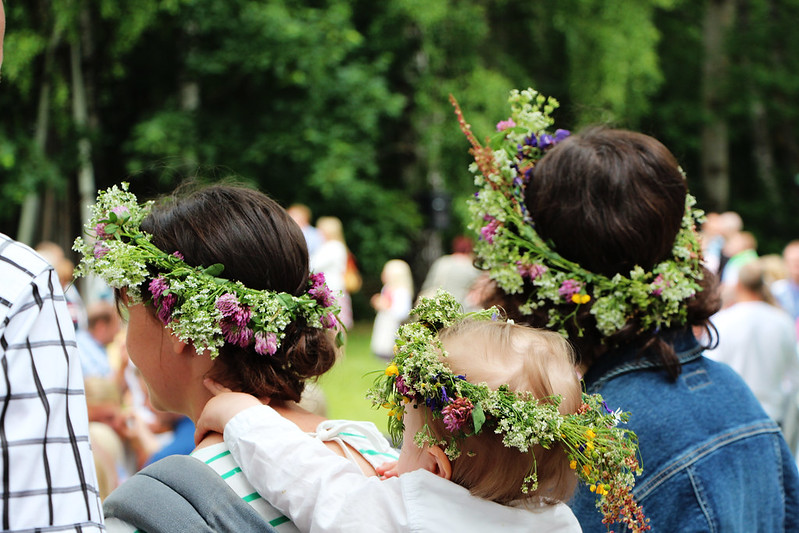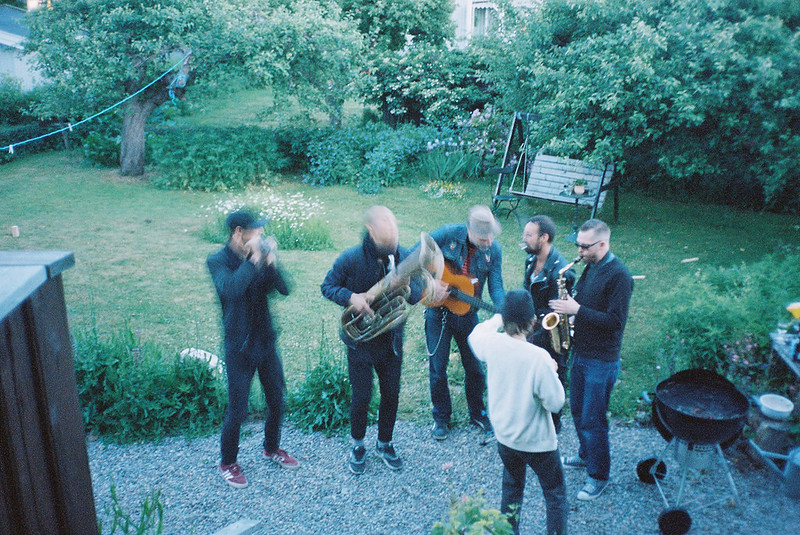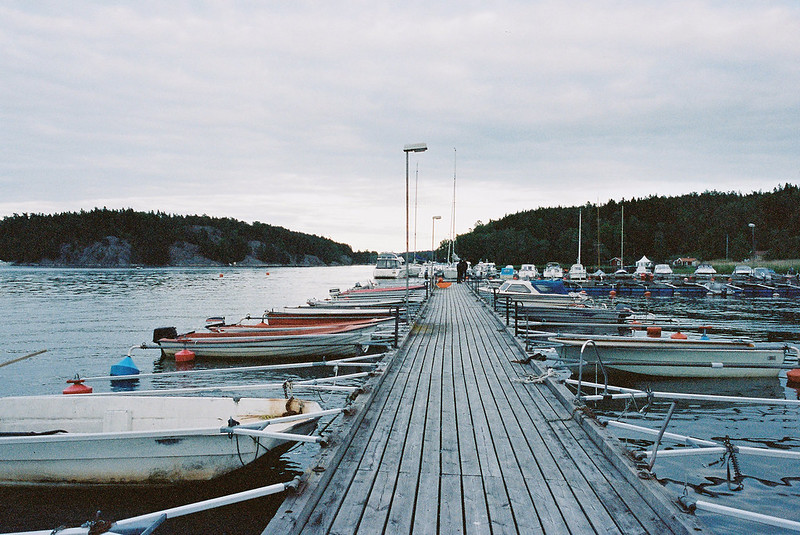Midsummer (Midsommar)
Sweden’s Festival of Flowers, Light, and Tradition under the Midnight Sun
2026/06/18 - 2026/06/19
Every June, as the sun barely sets during the season of the midnight sun, Midsummer (Midsommar) is celebrated in grand style across Sweden’s meadows, parks, and archipelago islands. The air is filled with the scent of wildflowers, laughter, and music as families and friends join hands to dance around the maypole, savor pickled herring and strawberries, and toast with schnapps—reveling in the endless daylight. For anyone wanting to experience the magic of Swedish summer, Midsummer is truly a dreamlike festival.
Locals and travelers alike—children and the elderly, everyone is a main character. It’s a warm, simple Swedish celebration where you can feel the bonds of nature, family, and friendship.
Main Attractions
The Maypole and Folk Dancing
The heart of Midsummer is the raising of the maypole, decorated with birch leaves and wildflowers. To the sound of fiddles and accordions, people of all ages join hands and dance in circles, performing traditional dances like “Små grodorna” (The Little Frogs). Flower crowns sway under the sun, laughter and footsteps echo across the grass—this is the essence of Swedish summer.
Key Events
The festival begins on Midsummer’s Eve (Friday between June 19–25), with the raising of the maypole, communal dancing, sack races, tug-of-war, and other games. Each town hosts live folk music, and there are smaller gatherings in gardens and summer cottages. As night falls, bonfires are lit, and the festivities continue under the never-ending daylight.
Costumes and Decorations
Many people wear embroidered folk costumes, vests, and aprons passed down through families. The iconic accessory is the midsommarkrans—a flower crown made from wildflowers picked in the morning dew. Tables are decorated with birch, wildflowers, and Swedish flags, creating a simple yet festive atmosphere.
Traditional Food & Drink
The Midsummer table is a feast: pickled herring, new potatoes with dill, gravlax (salt-cured salmon), sour cream, chives, crispbread, and cheese. For dessert, strawberries with cream are a must. The air is rich with the aroma of herbs and grilled meats, the clink of aquavit glasses, and the cheerful singing of “snapsvisor” (drinking songs). The sweetness of strawberries, the saltiness of fish, and the chill of aquavit—these are the flavors of Swedish summer.
Cultural and Historical Background
The history of Midsummer (Midsommar) dates back to ancient Nordic solstice festivals, long before Christianity arrived in Sweden. At this time of year, when the sun is at its highest, people celebrated the length of the days, the bounty of nature, fertility, and the renewal of life by lighting bonfires, singing, dancing, and performing rituals with flowers. These were all part of “nature worship,” wishing for good harvests, health, and love, and included all-night feasts and protective customs passed down in each region.
In the 16th century, the tradition of the maypole arrived from Germany and evolved into a uniquely Swedish custom. The maypole became a symbol of fertility and vitality, with villagers decorating it with birch and wildflowers and dancing around it together. Midsummer night also gave rise to folklore, such as the belief that if you pick seven kinds of wildflowers and place them under your pillow, you’ll dream of your future spouse—adding a magical, romantic air to the celebration.
Even as industrialization and urbanization advanced in the 19th century, Midsummer remained a vital occasion for reaffirming family and community bonds in the countryside. Today, it stands alongside Christmas as Sweden’s most important national holiday, with many Swedes returning to the countryside or their family homes to celebrate nature, tradition, and togetherness. For Swedes, Midsummer marks the “real beginning of summer” and is deeply rooted in the national spirit.
Participant Voices
As a Japanese exchange student, it was my first time joining Midsummer. I was moved to see children and adults holding hands and dancing together. A local family invited me to their picnic and taught me how to make a flower crown. The food and the warm atmosphere were unforgettable.
Fun Facts
- Over 6,000 tons of strawberries are consumed across Sweden during Midsummer weekend.
- The “Små grodorna” (Little Frogs) dance is a staple—everyone hops around pretending to be frogs!
- Midsummer is almost always accompanied by rain—raincoats and rubber boots are a common sight.
- There’s a legend that if you pick seven kinds of wildflowers and place them under your pillow, you’ll dream of your future spouse.
Festival Dates
Midsummer is celebrated every year on the Friday and Saturday between June 19 and 25 throughout Sweden.
The event schedule is subject to change. Please check the official website for the most up-to-date information.
Media

photo by Tina

photo by Hannes E.

photo by Blaise de la Croix

photo by xenia ayunova

photo by xenia ayunova
Information
| Name | Midsummer (Midsommar) |
| Country | Sweden |
| Area | Stockholm, Skansen |
| Date | 2026/06/18 - 2026/06/19 |
| Link |
Upcoming Festivals
Dia de la Virgen de Guadalupe Mexico
A Festival Weaving Faith, Fervor, and Mexican Identity
2025/12/11L'Escalade Switzerland
Geneva’s Grand Winter Festival of Courage, Chocolate, and Community
2025/12/12Umkhosi Wokweshwama South Africa
The Zulu First Fruits Festival—A Sacred Celebration of Land, Ancestors, and Renewal
2025/12/12Lucia Festival (St. Lucia's Day) Sweden
A Festival of Light Illuminating the Nordic Darkness
2025/12/15Las Posadas Mexico
The Luminous Quest for Sacred Shelter
2025/12/22Noche de Rabanos (Night of the Radishes) Mexico
A celebration blending art, farming heritage, and cultural traditions
2025/12/23Chant of the Sybil on Majorca Spain
A Medieval Prophecy Echoes Through Majorcan Christmas
2025/12/23‘Hatajo de Negritos’ and the ‘Hatajo de Pallitas’ Peru
A Christmas Festival of Rhythm, Faith, and Afro-Andean Heritage in Peru’s Ica Region
2025/12/24Harbin International Ice and Snow Sculpture Festival China
A Frozen Wonderland Where Art and Adventure Merge
2025/12/24Takanakuy Peru
The Andean Festival of Reconciliation by Fist—How Confrontation Creates Year-End Peace and Bonds